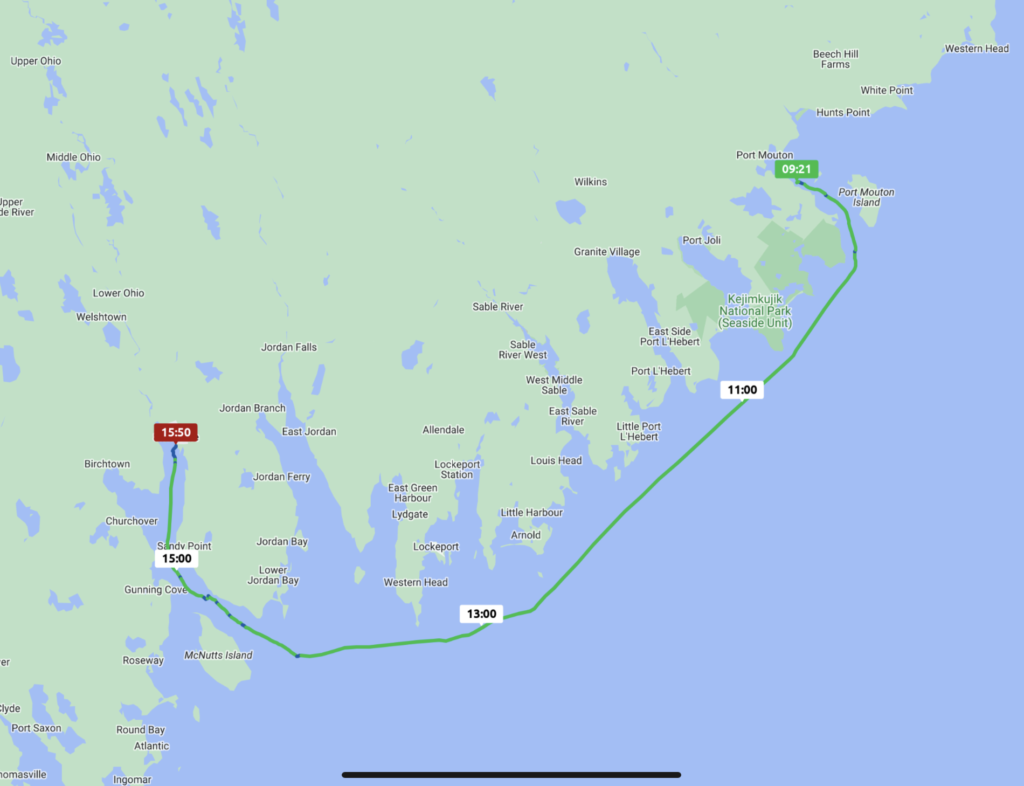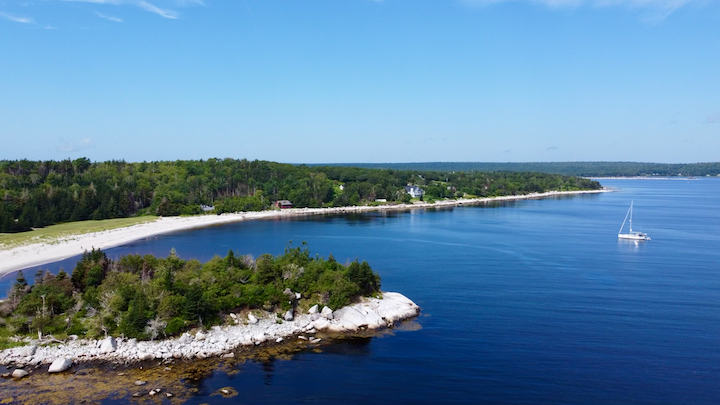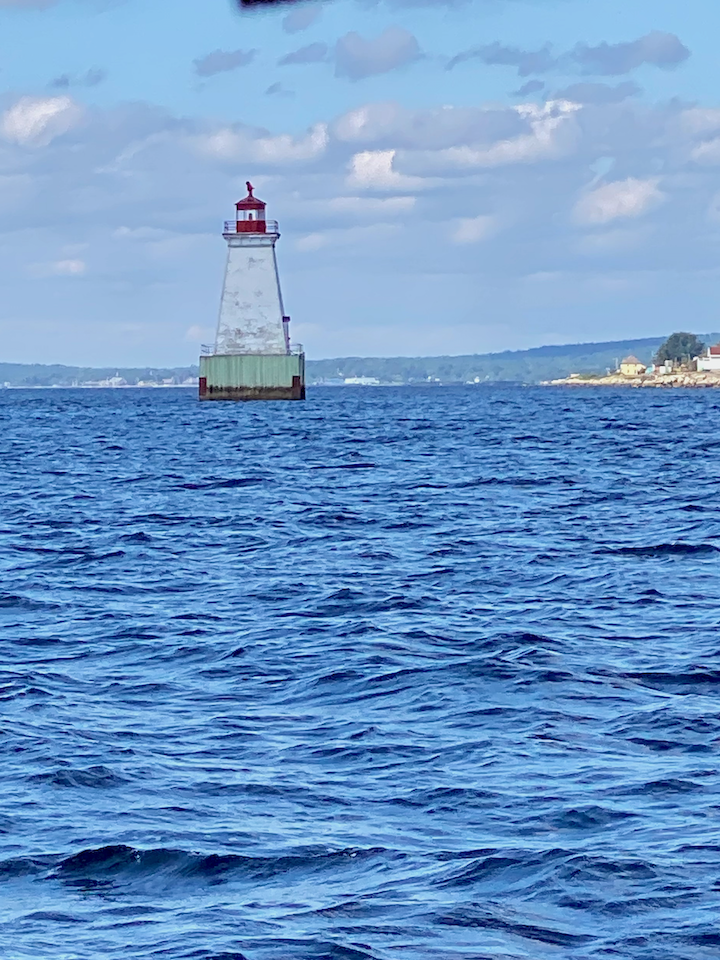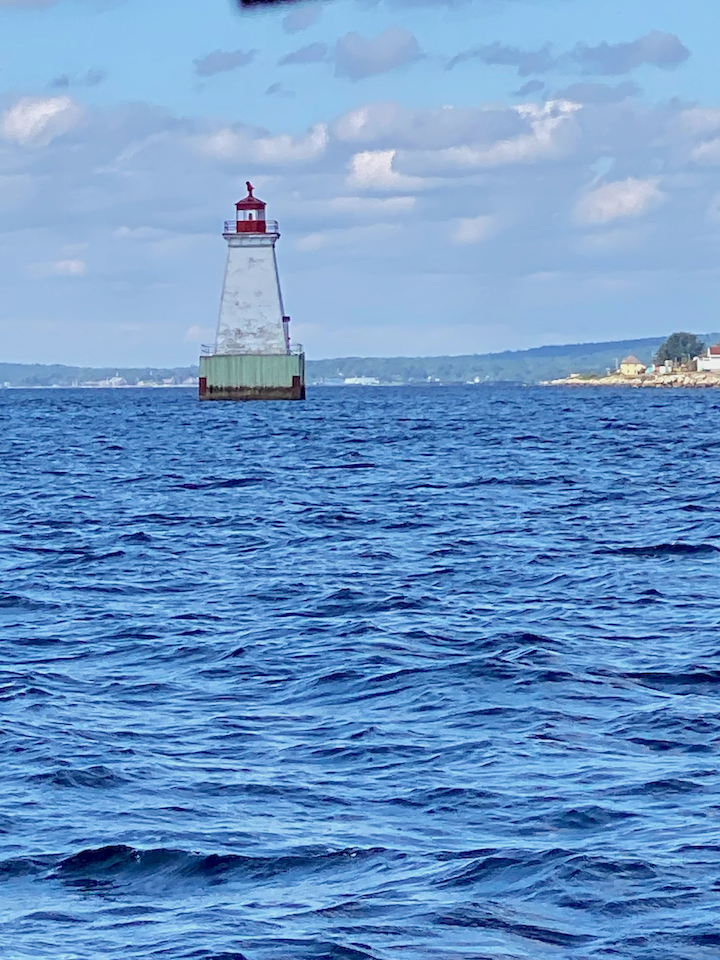Yesterday, we left Carter’s Beach and made our way further down the south coast of Nova Scotia to Shelburne.

On the Atlantic, the weather forecast talks about two kinds of sea state characteristics: waves and swells.
Waves are formed by wind found in the same location. They are generally choppy and unpredictable as they’re influenced by constantly changing wind speed and direction. Swells, on the other hand, start as waves, but have enough energy to travel well beyond the area in which they are formed. They are like rolling hills and valleys, with a lower, and more steady frequency than waves. Swells can be pleasant, gently lifting and lowering the boat. Waves tend to knock the boat around causing either pitching (forward and aft rocking), rolling (side to side rocking), yawing (rotating back and forth when viewed from above) or a combination of the above!
When we first exited the Gulf Saint Lawrence for the open Atlantic, we were apprehensive about what these waters would hold in store. As previously reported, we had several days of swell with no waves. We thought, “this will be a walk in the park,” that is, until we started heading southwest along the Nova Scotia coast. The reality is that there are strong southwesterly winds, causing waves to be on the nose, causing the boat to pitch. At the same time, swells are moving west to east. The combination creates what’s called a “confused” sea state, inevitably causing similar confusion to sailors’ stomachs!
Fortunately, neither of us is prone to seasickness, at least when we’re on deck. But when you go below to do something, even the most seasick-resistant sailor will feel queasy in these conditions. The only solution is to come back up on deck and look at the horizon for a while until it passes.
Yesterday, we pushed on down the coast to Shelburne, NS, in a flotilla with Amuleto (Hélène and Benoîr’s Beneteau). Jon and Cheri held back to get in some more of beautiful Carter’s Beach.
The wind was on our nose most of the way so we motored, but when we turned into the bay that forms Shelburne Harbour, there was immediate shelter and the wind was now abeam. We raised the sails, killed the motor and enjoyed a great sail for the last 10 nautical miles.
Shelburne is full of history and has been a crossroads between people of different backgrounds. Originally settled by Mik’maq First Nation people, they were followed by European settlers. Acadians who refused to fight with British loyalists against France were persecuted, and a large contingency moved to Massachusetts. At one point in the 18th century, Shelburne was more populous than Halifax or Montréal. In the late 18th century, 1,500 escaped African American slaves migrated here and fought with Britain against the Americans in exchange for freedom. In the 19th century, a large Welsh community immigrated to Shelburne.
When we first arrived, we went to fuel up at Shelburne Harbour Yacht Club. This is a very friendly yacht club with a recently updated clubhouse that includes a fully equipped kitchen, laundry, showers and a bar upstairs. We always carefully calculate the fuel needed in order to avoid over- or under-filling. True North took more than expected. After we left the fuel dock and tied up to a mooring ball, we smelled diesel fuel. Once again, we had a leak! We have been unlucky with diesel fuel, having experienced at least 4 leaks over 3 sailboats we’ve owned. Before leaving on this cruise, we found the gaskets where the fuel uptake tube is attached to the tank to be defective. This time, the observation port on top of the tank somehow worked itself loose. We guess it was from vibrations. It turns out as we pumped the last fuel of the fuel in, it was gushing out of the top of the tank down into the closed bilge compartment underneath. We secured the loose observation port, pumped the spilled fuel into repurposed water jugs and took them ashore. We’ll need to buy some emulsifying bilge cleaner and flush the bilge compartment a few times to get rid of the residual.
Once the problem was contained, we capped off the day’s adventure with a very nice dinner on the patio of the Charlotte Lane Café, an excellent Indian – Canadian restaurant a few blocks from the harbor.





Leave a Reply